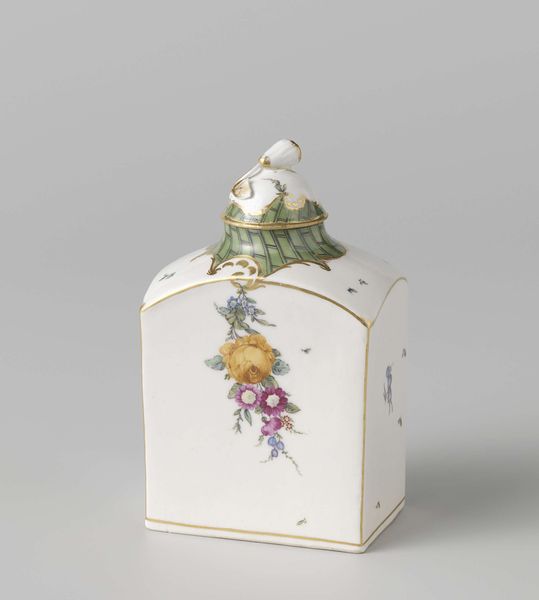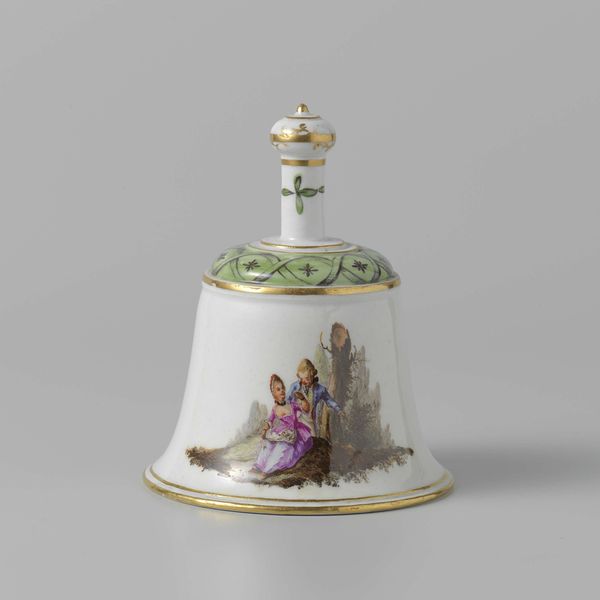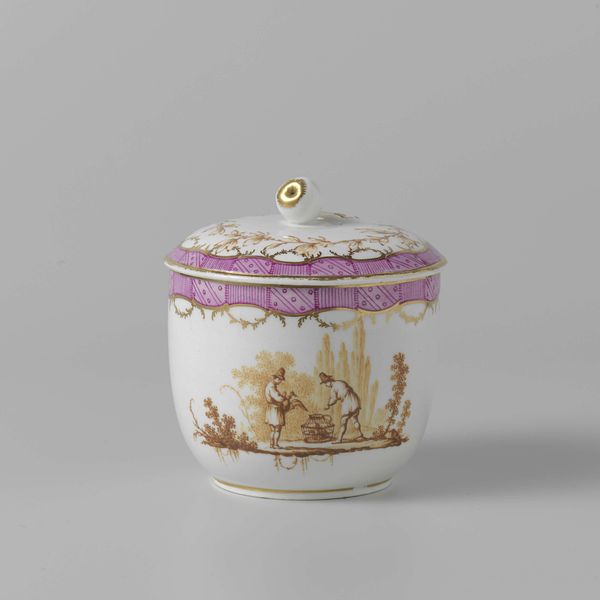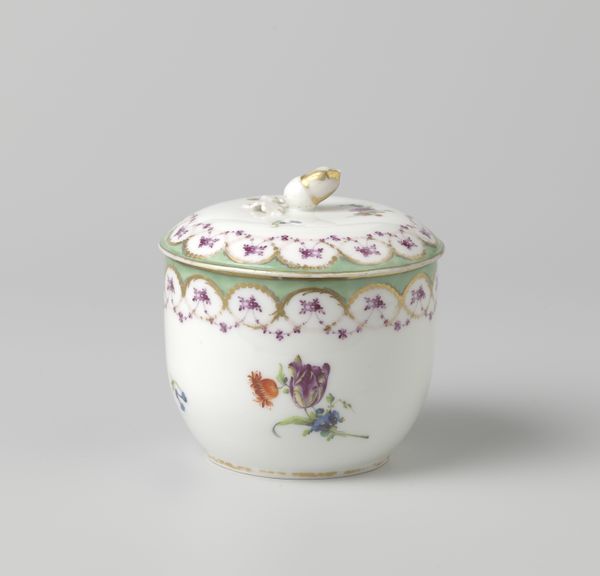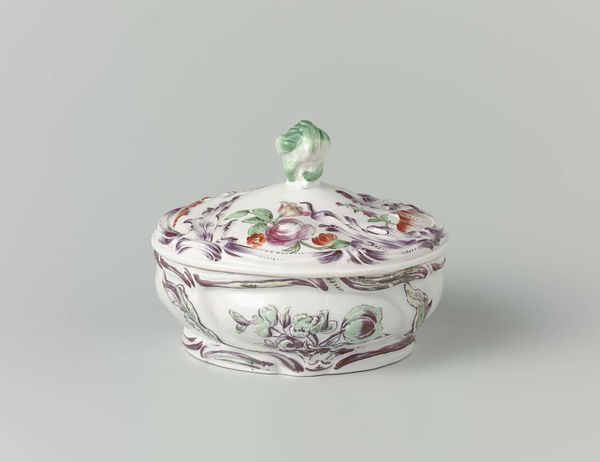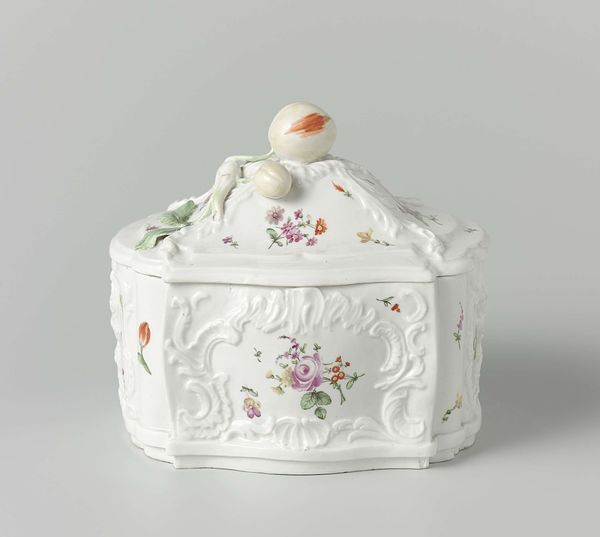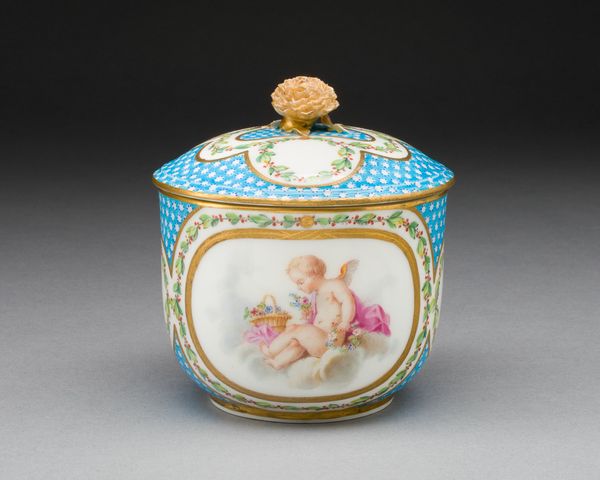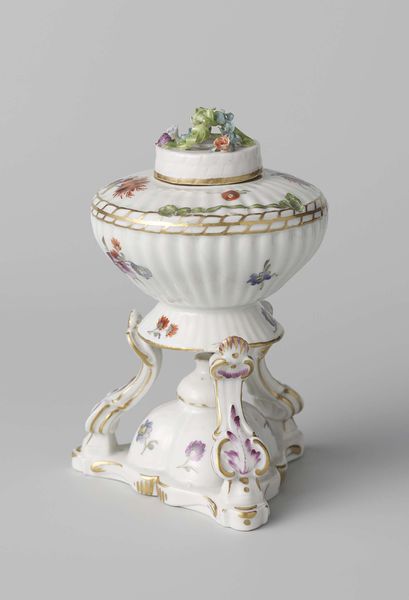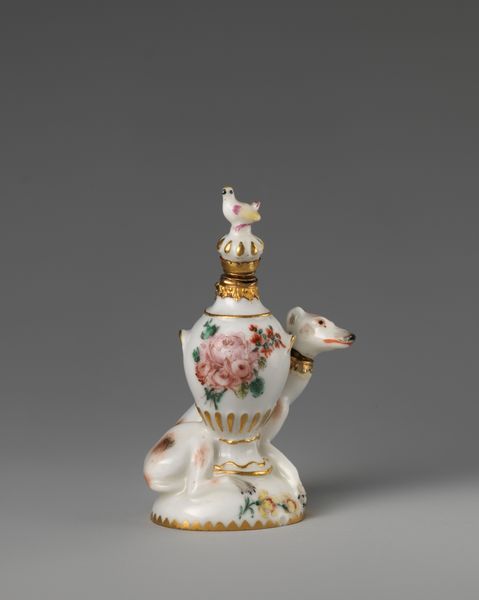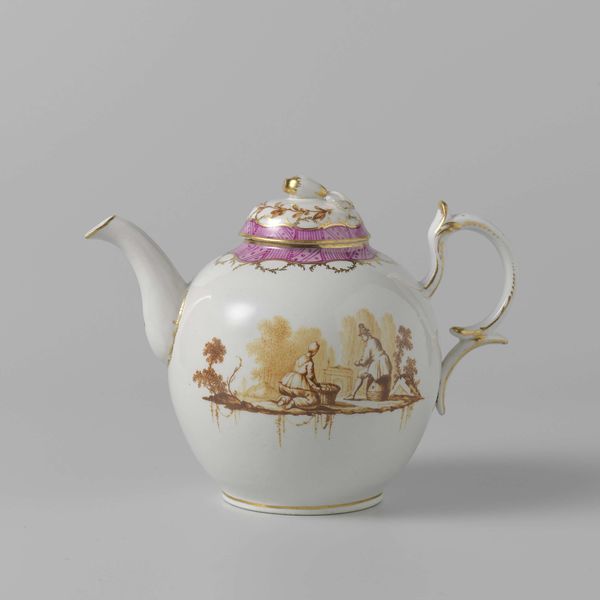
Copyright: Rijks Museum: Open Domain
This tea service was made by Loosdrecht, using delicate porcelain. The fine material is coated in a glossy glaze and decorated with hand-painted scenes. Porcelain, also known as ‘white gold’ due to its expense, was a coveted luxury item for wealthy Europeans. This tea service, likely produced in the late 18th century, reflects the rising popularity of tea drinking and the associated social rituals. The delicate material influenced its appearance, dictating the refinement of its shapes and ornamentation. The making of porcelain was a highly skilled tradition involving complex processes. Potters, painters, and kiln operators would have collaborated to achieve the final result. Mass-produced in factories, these items were the product of exploited labor and were also tied to colonialism. By considering the materials, making process, and historical context, we see how this seemingly innocuous object embodies complex social dynamics.
Comments
rijksmuseum about 2 years ago
⋮
Tea services represented a significant part of the production of the Loosdrecht porcelain factory. On display here are a teapot, milk jug and sugar bowl along with other less familiar parts of a tea service, such as a slop bowl, which is used to rinse and warm the cups between two ‘courses’, and a drip catcher (pattipan), which catches the drips from the spout of the teapot.
Join the conversation
Join millions of artists and users on Artera today and experience the ultimate creative platform.
